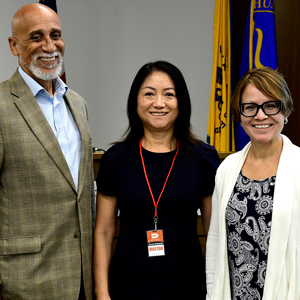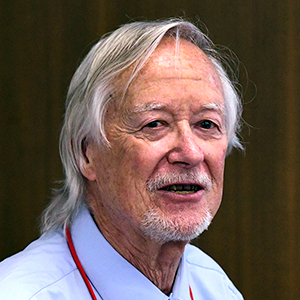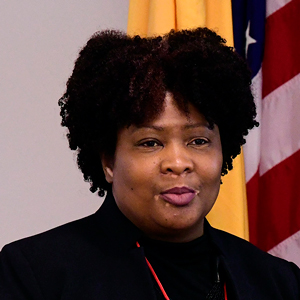 Among her many projects, Sipes develops computational approaches for analyzing data generated through the Tox21 program. (Photo courtesy of Steve McCaw)
Among her many projects, Sipes develops computational approaches for analyzing data generated through the Tox21 program. (Photo courtesy of Steve McCaw)Scientists developed a fast, accurate, and cost-effective way to assess whether a chemical is potentially carcinogenic. The work involved a collaboration between researchers at the National Toxicology Program (NTP), Boston University, and the Broad Institute. Funded in part by the NIEHS Superfund Research Program (SRP), the study was published April 9 in the journal Environmental Health Perspectives.
The new approach represents a promising step forward for the Toxicology in the 21st Century program. Through this program, known as Tox 21, federal agencies are creating innovative test methods to predict how chemicals may affect humans and the environment.
“This approach and others like it may lead to new insights into biology that could help us identify chemicals with adverse health effects, such as cancer,” said study co-author Nisha Sipes, Ph.D., from the NTP Toxicoinformatics Group.
Assessing safety
Most chemicals that we are exposed to have not been tested for their carcinogenic potential because standard approaches to carcinogen testing are time-consuming and expensive. For example, the gold standard approach for testing a suspected chemical is a two-year rodent test, which costs millions of dollars.
To address these limitations, a large push is underway to use technology to develop new methods that can screen large numbers of chemicals using cells grown in a laboratory.
 Henry oversees SRP grants that span human health toxicology, risk assessment, detection technologies, and remediation approaches. (Photo courtesy of Steve McCaw)
Henry oversees SRP grants that span human health toxicology, risk assessment, detection technologies, and remediation approaches. (Photo courtesy of Steve McCaw)Heather Henry, Ph.D., a health scientist administrator with SRP, says they chose to fund this project because of its unique approach to characterizing hazardous substances. “We saw their proposal as a high priority for NIEHS,” she said, “because it was a high-throughput testing platform with potential to screen the tens of thousands of chemicals yet to be classified for carcinogenicity.”
The power of machines
For this study, researchers tapped a technology called gene expression profiling, which measures the activity of a thousand or more genes to capture what is happening in a cell at any given moment. First, the team exposed cells to hundreds of known carcinogens and noncarcinogens. Then, they measured the cells’ gene expression profiles and fed the resulting data into a computer.
The computer used machine learning techniques to find patterns within the profiles that corresponded to whether a given chemical was known to be carcinogenic. These patterns then formed the basis of a model that researchers used to correctly predict the long-term carcinogenicity of a variety of different chemicals.
“The predictive accuracy of the models was strong enough that they could be used to prioritize chemicals for further cancer and genotoxicity testing,” said Scott Auerbach, Ph.D., head of the NTP Toxicoinformatics Group.
Cancer’s origins
 Auerbach leads the Toxicoinformatics Group within the Biomolecular Screening Branch of NTP. (Photo courtesy of Steve McCaw)
Auerbach leads the Toxicoinformatics Group within the Biomolecular Screening Branch of NTP. (Photo courtesy of Steve McCaw)The new approach may not only indicate whether a specific chemical is carcinogenic, but also inform further research on how different compounds cause cells to turn cancerous. For example, the researchers found that many of the expression profiles in their study involved genes implicated in DNA damage and repair processes.
The research team made the data from the study available to other researchers online. They also created a portal for the public to search and visualize the results.
Citation: Li A, Lu X, Natoli T, Bittker J, Sipes NS, Subramanian A, Auerbach S, Sherr DH, Monti S. 2019. The Carcinogenome Project: in vitro gene expression profiling of chemical perturbations to predict long-term carcinogenicity. Environ Health Perspect 127(4):47002.
(Marla Broadfoot, Ph.D., is a contract writer for the NIEHS Office of Communications and Public Liaison.)









